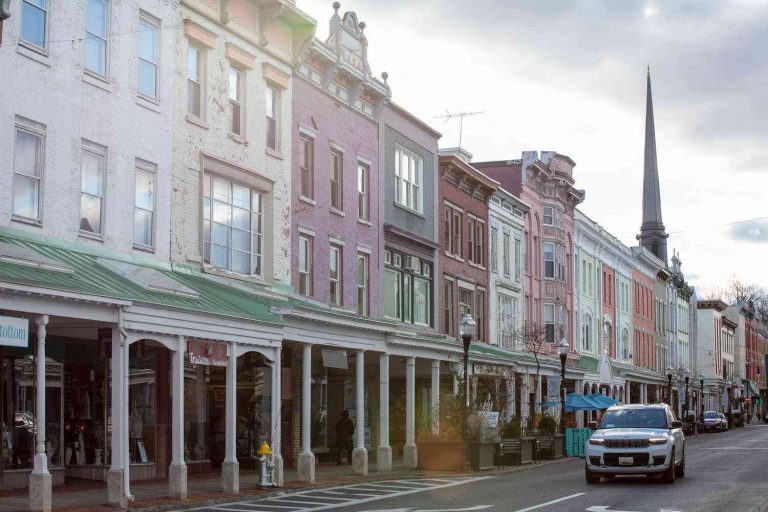Development in New York City has been shown to displace and degrade neighborhoods, causing chronic problems with income inequality, crime, affordability, and health issues, as noted in the 2017 report by the city’s Commission to Combat Rikers Island (pdf). The city’s Metropolitan Transportation Authority (MTA) has attempted to address these issues by undertaking the development of green infrastructure to help repair upstate communities. A local action plan implemented by the state calls for the creation of 1,000 tree farms, a half-million feet of community gardens, and implementation of nearly all the previously approved local habitat initiatives.
Despite these projects and the government’s efforts, the need for green infrastructure and public transportation is also clearly evident in Kingston, a city designated the first low-income and environmental restoration area in the nation by the US Department of Housing and Urban Development (HUD). Roughly 90% of Kingvillians participate in a 50-mile path to the border of the United States and Canada, where they wait for Amtrak, the Metro-North Railroad, or a bus to connect them to New York City. The city relies on trains for up to 60% of its electricity and 30% of its vehicles, according to a report from Union Station New York (pdf), and Kingston has seen the enactment of low-income housing rules that require developers to build high-quality, energy-efficient housing close to transit.
Although initiatives to improve King’s healthcare system, sports facilities, and educational facilities abound, the city is still plagued by the problems noted in HUD’s latest HUD report. Compared to King, many of the challenges and neglected problems noted by HUD are being faced by other smaller communities in New York, such as Kingston, Troy, Schenectady, and the tiny borough of Ossining, which had a 2015 population of 4,258 (pdf). Though New York, Rhode Island, and nearby states still have the highest youth unemployment and poverty rates in the nation, the state struggles with gang violence and displacement caused by gentrification, as documented in the 2014 report by the US Justice Department, “Responding to the Impacts of Change in the Urban Poorer Neighborhoods of New York City” (pdf).
These developments have led to the migration of many young people from the low-income and high-crime areas of Newark, New Jersey, to New York City and Schenectady, and the growth of a massive tree farm on the edge of the Five Towns in Queens that services 20 acres of farmland and was listed as an urban forest. As shown in the above video, the Citi Trust, a public-private partnership between JPMorgan Chase and the city, has also brought many new apartments and commercial development projects to Schenectady, continuing the city’s resurgence.
Additional cities, such as Little Rock, Arkansas, and St. Louis, Missouri, have also been faced with desecration of their urban forests by developers and high-density development, and are being forced to support efforts to protect and preserve urban forests. As other cities face similar problems, the possibilities are limitless for what King could become.
According to a 2016 report by the National Trust for Historic Preservation, urban forest creates about three times as many jobs than forest industry alone, and billions of dollars in economic activity. Even with the massive amount of investment and work still needed, Kingston’s future is undeniably bright.
This story is part of a series produced by the Guardian to mark the first anniversary of the Royal Horticultural Society’s designation of Kingston-upon-Thames as a UNESCO City of Design.
The series is part of The Great Places to Live, the Guardian’s global journalism project exploring how cities are changing. Our investigation includes reports, data and interactive graphics about 162 of the world’s most vibrant cities and economies from Brazil to Istanbul and Johannesburg. The Guardian is opening nominations for the Great Places to Live network in 2019, which will identify world cities that have demonstrated innovative and high-impact approaches to their development. For further information, click here.
